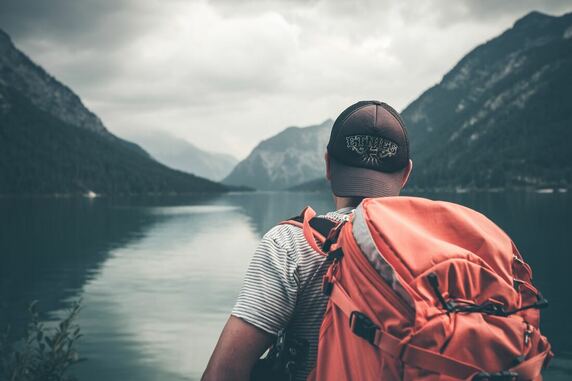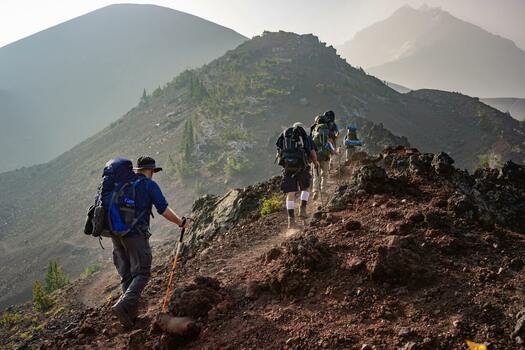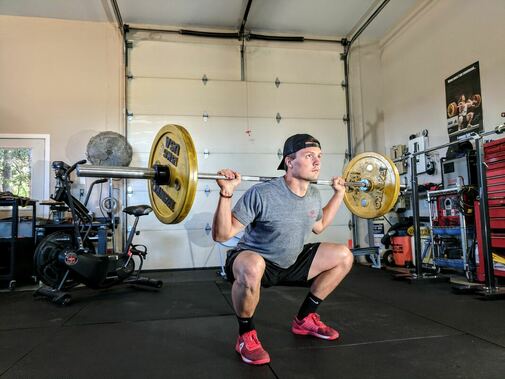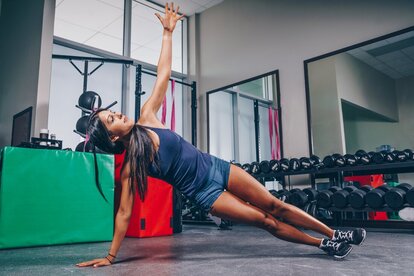|
Do you want to know How To Train For A Heavy Pack? This is one of the most common questions I hear from hikers and trekkers. But unfortunately (like many things in the hiking world) the usual advice isn't much help... Common answers like 'go hiking with a backpack', 'build up slow' and 'get your pack fitted' are really nothing more then common sense. And in my eyes, they don't do much to solve the actual problem... The goal of this article is go beyond the generic answers that have been shared hundreds of times and give you some genuine and practical strategies to help you best prepare for the rigors of heavy pack hiking. When it comes to training for a heavy pack, there are a number of things you want to consider. These include:
Read on to learn what they are, why they are important and how to apply them in your training! pack walking Obviously the most specific way to train for a heavy pack, is to train with a heavy pack. But before you just load up and hit the trail, lets go into a bit more detail... As anything in the training world, a bit of structure and a bit of planning will go a long way to increasing the effectiveness of your workouts and minimising any risk of injury. There are two types of pack walking you want to include in your prep: Trail Pack Walking This is simply hitting the trail on your training hikes and loading up the pack. The main concern here is doing too much, too soon. So a few good principles to follow here include:
For a full rundown on how to plan your trek training, click here Overloaded Pack Walking This is where you will be loading up your pack HEAVIER then you would on the trail. The idea here is to overload the muscles and get them incredibly strong. But obviously this is not practical (or safe) to do on your longer trek training... So the answer here is to do Interval Training. By breaking up your work with rest intervals, you can increase the stimulus on the body in a practical and effective way (which is also very time efficient!). Here is how you do it:
* Each week you will alternate between increasing the weight of the pack by 5% and by adding another interval Example Programming: Week one: 4 sets, 10% total body weight Week two: 4 sets, 15% of total body weight Week three: 5 sets, 15% of total body weight Week four: 5 sets, 20% of total body weight etc Strength training We all know strength training is a great way to gain strength in your legs... And obviously any strength in the legs is going to transfer over into helping you with a heavy pack on your back. But strength training involves a lot more then just a few squats and lunges.... To get the best benefits you want structure and progression. Which will ensure you are regularly challenging yourself, while limiting the risk of injury. I will also note, while the legs are going to be taking most of the load, it is still important to include some upper body here. Example 12 Week Plan: Week 1-4: Prep Phase
Week 9-12: Muscular Endurance Phase
Don't know how to create a strength workout? Read here to learn how!
|
AuthorRowan is a personal trainer who specialises in training for hiking, trekkers and mountaineers for their bucket list adventures. Archives
July 2024
Categories
All
|
AboutSummit Strength is a personal training for hiking service created specifically to help hikers have the best chance of a safe, enjoyable and successful adventure.
|
Company |
Services |
|
|
© COPYRIGHT 2018. ALL RIGHTS RESERVED.
|
Website Design by My Personal Trainer Website
|






 RSS Feed
RSS Feed
